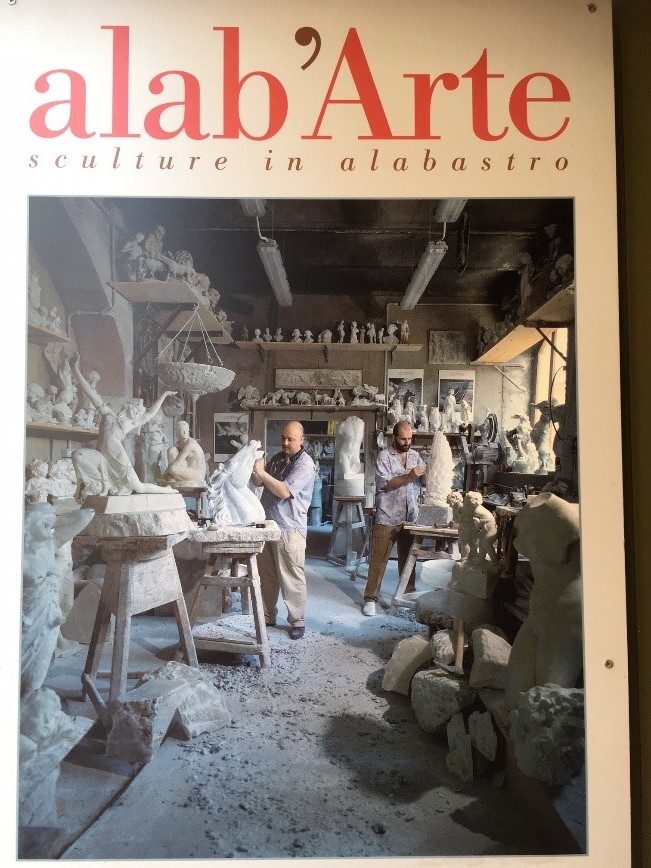Volterra – Alabaster and sculpture
20 June 2018
What was to become a busy month in June with friends Arnold and Kate, we drove to the ancient town of Volterra, towards the southern area of Tuscany. As a walled hill-top town, Volterra was a human settlement at least eight centuries BC and contains much evidence of its Etruscan, Roman and Medieval past.
Parts of the Etruscan walls of Volterra are dated to 3rd and 2nd centuries BC and the Museo etrusco Guarnacci contains examples of Etruscan art including a huge number of alabaster funeral urns and sculptures in bronze, stone and terracotta. The well preserved 1st century Roman Theatre excavated as recently as the 1950s gives a fine example of the Roman period. The cathedral, baptistry, Piazza and Palazzo dei Priori are of the medieval period, whilst the Fortezza Medicea, built in the 1470s, is an example of the Renaissance building and power exerted by the Florentine Medici family.
With a shared interest in sculpture, our main objective on this trip was look at the work carved in alabaster, of which Volterra has become justly renowned.
According to their website www.alabarte.com, the owners Roberto Chiti and Giorgio Finazzo of Alab’Arte are the last and only company that represent artisanal sculpture in alabaster in Volterra. Certainly, a visit to their workshop in the centre, it is immediately obvious as to their skill and commitment to their art.
Roberto and Giorgio were delighted to share some of the methods and secrets of their art. They, and every object and piece of machinery in the workshop was covered in a very fine powder that occurs whilst they carved and smoothed the alabaster. They seemed little bothered about wearing face masks, since they assured us that the fine dust was not harmful when breathed in and is a constituent of ‘Plaster of Paris’ and of talcum powder used in the cosmetic industry.
Alab’Arte worshop, Volterra
The name ‘alabaster’ is thought to have derived from the ancient Egyptian word known as “a’-labaste”, which refers to the vessels of the Egyptian goddess Bast. As a mineral, there are several different types ranging from pure white to a very rare black alabaster found only in three veins, one in America, one in China and the other in Italy.
Tuscan alabaster occurs in nodular masses embedded in limestone with several recognised varieties such as veined, cloudy and spotted that are carved into vases, lights and other objects traded throughout Tuscany. The finest alabaster obtained principally from Castellina Marittima in the province of Pisa, about 35km south-east of the city, was used for figure-sculpture. When processed, alabaster can be dyed and can resemble the much harder marble.
We were just able to resist buying some of the quality sculptures made in the Alab’Arte workshop that were available in many shops in Volterra.


